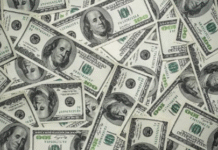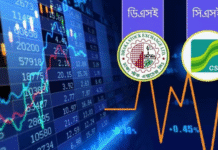Ghulam Murshed
THE gung-ho ruling regime oftener than not reiterate that the country is poised to become a Middle Income Country (MIC) by the year 2021. One can take pride in that as other near ones will for sure envy us and it is pretty much better to be envied rather than being pitied. But it is said easier than done and maybe akin to overtake a French mirage.
Because, for that to happen, Bangladesh must clock a per capita income of around $1700 and a life expectancy of 70 years plus, UNDP’s HDI is no nonsense given the Gini Coefficient related to actual population (16.5cr). Last year our per capita income was around $840 only. And our income distribution is highly skewed and benefits are nullified by double-digit inflation eroding people’s purchasing power (PPP). Thus the high degree of inequality is the inevitable consequence of any economic growth which is also faulty as it does not take into cognizance of huge environmental loss.
Then again, by 2021, this growth must consistently waltz around 8pc too. Now it hovers around 6pc in growth trajectory. For the present FY14, it is projected at 7. 2pc but country’s reputed economists and the whistleblowers in WB, IMF, ADB, JICA beg to differ in achieving our growth target in real terms due to reasons one too many besides poorer domestic and foreign investments and utterly, inadequate infrastructures, higher inflation and unemployment and inability to use foreign aid in pipeline. Besides, in an economic outlook, the OECD set global economy for a sharp slowdown for FY14.
Economy in distress
On 11 May 2013 Mr. Muhith finally admitted that our economy is in distress; the financial sector is in doldrums while the banking sector’s health has worsened in 2012. All businesses, trade, commerce, multiple services have halted due to lingering political turmoil and frequent countrywide shutdowns; classified loans concentrated in state-owned commercial banks registered higher, snowballing into inefficiency in fund management and politically influenced lending. However, the FM’s admission in presence of the ministers and secretaries was not surprising.
On Sept 4, he again declared at the BBS in presence of eminent economists and former finance secretaries: “Bangladesh $46 away from Middle Income country status as the per capita income rises to $1044 from $923” because of better performance by our social sector. And if it could be raised to $1190, then the country would meet one of the 3 conditions for having that status. Nonetheless, a rapid economic growth with a moderate inflation must be the most important target for our ‘dream-come-true’. We have to determine a base year, with rate of inflation which is about 8% now according to BBS but a survey and research think tank puts it at 11.6%, to calculate GDP growth depicting the real picture of the country’s economic dynamism.
Sri Lanka tops the region with an annual per capita income of $3,000 while India, the world’s 4th largest economy, ranks 94th in pc income in the world.
Accurate info lacking
However, nothing is further from truth that our armchair know-it-all experts are fully aware that this country utterly lacks accurate economic statistics or information or survey data for use by the government showing sub-sectoral growth and how income and consumption are distributed among its citizens. To be candid, on a vector analysis, the economic trends show a yawning gap between the income and expenditure; and savings-investment has further widened to 8.7pc causing a deleterious effect, while foreign grant as percent of GDP curve went down into an increased debt and deficit in the economy. The per capita debt burden stood at Tk 3400 in FY13, an increase by 25% over FY2012. Consequently, people bear the brunt of it in terms of higher utility charges, lesser investment in social sectors, double digit inflation and higher incidence of regressive taxes like Vat.
The ever-rising public debt destabilizes the macro-economy while deficit financing increased real interest rate, crowding out the private investment. The deficit as percentage of GDP had reached the pinnacle in past years at the rate of 25%. Less revenue collection has induced deficit [government debt] while the expenditure was the highest in FY12-13. Non-development expenditure like foreign travel increased while development expenditure drastically decreased resulting higher deficit. Curiously, government is mum about it. Companies must ratchet up spending that could help unleash more hiring than firing along with business spending which means they’ll be buying more goods, providing jobs, and those things are really what’s going to be the multiplier that in turn helps to hasten economic recovery and move it into greater expansion mode.
Or economy is now hobbled by high unemployment and household debt and may now face curbs in government spending except on infrastructures to boost aggregate demand and spur growth. The government’s severe sequester spending cuts take a bigger bite, yet with cloudy economic outlook, things will be changing. If they don’t, or economy falters, other doors remained open for countervailing action or revised policy accommodation.
To sum up, strong remittances, moderate exports, weak imports improve BoP and Taka appreciation, but slow economy. There’s some BoP equilibrium with a low level of economic activity and an appreciated exchange rate. If the evolving events mirror a decline in exports and remittance inflows pressurizing BoP, BB must hold on to its reserves and depreciate Taka. And we should not confuse about stability and growth – the former fetches the latter, going by all empirical studies at Yale and Columbia Research centres. IMF pushes us on stability rather than growth. And it will be a mistake to end the PSI program in which case there’d be increased under-invoicing causing huge loss of government revenues.
No excess aggregate demand
The country has no excess aggregate demand, even then inflation needs to be reduced and there is a trade-off between inflation & unemployment, the twin evils of macro-economy, plus growth too. Monetary policy per se cannot contain inflation. Exporters should be given currency support. Losing GSP status is not the end of the world nor will the sky fall after the withdrawal of DFQF. Without political stability, neither will FDI flow in nor would the growth be propped up.
Contrarily, countries like Malaysia, etc have more than $ 17,000 per capita gross national product [GNP] in dollars adjusted with point-to point inflation respectively with a high HDI with a Gini Coefficient between 28 & 38. Besides, in this country receivers of remittances usually spend their money on nonproductive purposes. These are some issues which must be dealt with in right earnest along with HRD for an improved human capital. Or else T-bills, Bonds can be sold to have a ‘placebo’ effect. For a 6% growth, we need 26% savings rate and 32% investment rates, according to the neoKeynesian formula. However, we can’t exile corruption or poverty, but can curb it by e-governance and structural reforms.
To wrap up, the gospel of increased per capita income and a higher growth rate each year till 2021 in a row calls for a doable action program. Bangladesh moves up 8 positions in Global Competitiveness Index (GCI) which is music to the ear. Strange, no political party has any economic agenda in their poll manifestos to the 10th JS, barely months away with all the election season travails.
Source: Weekly Holiday









